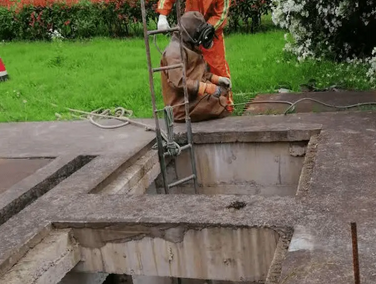How to clean the sewage lift
The cleaning method of the sewage lift mainly involves the steps of turning off the power, preparing cleaning tools, emptying the internal garbage, flushing the inner wall, using detergent, scrubbing the inner wall and subsequent flushing. The following is a detailed cleaning process:
1. Preparation work
Turn off the power: Before doing any cleaning work, first make sure that the sewage lift has been turned off and disconnected from the power supply to prevent electric shock accidents.
Prepare cleaning tools: Prepare the required cleaning tools, such as rubber gloves (to protect your hands), plastic brushes (for scrubbing the inner wall), detergents or soapy water (for dissolving dirt) and clean water.
2. Empty the internal garbage
Open the sewage lift door: Carefully open the door or lid of the sewage lift to ensure that sewage or garbage will not splash out.
Empty the garbage and sewage: Empty all the garbage, sewage, etc. in the device. You can use a bucket or other container to collect these wastes.
3. Rinse the inner wall
Preliminary rinse: Rinse the inner wall of the sewage lift with clean water to flush away the debris and scale attached to the inner wall. Pay attention to flushing all corners to ensure that nothing is missed.
4. Use detergent
Choose a detergent: Choose a suitable detergent according to the dirt inside the sewage lift. Generally speaking, you can choose a mild detergent or soapy water, and avoid using strong corrosive detergents such as strong acids and alkalis.
Apply detergent: Apply detergent or soapy water to the inner wall of the sewage lift, especially where there is a lot of dirt. Then wait for a while to allow the detergent to fully dissolve the dirt.
5. Scrub the inner wall
Scrubbing process: Use a plastic brush to scrub the inner wall of the sewage lift, and brush off the dissolved dirt and detergent together. During the scrubbing process, gradually increase the strength, but be careful not to use hard tools to scrape the wall surface to avoid damaging the inner wall.
Full cleaning: Make sure to scrub all corners and gaps to thoroughly remove the dirt on the inner wall.
6. Subsequent rinsing
Multiple rinses: Rinse the inner wall and bottom of the sewage lift with clean water multiple times to rinse off the residual detergent and dirt. Pay attention to the uniformity and intensity of the water flow when rinsing to ensure that there are no dead corners and residues.
7. Inspection and restart
Inspect the equipment: After cleaning, carefully check whether the various parts of the sewage lift are intact, especially whether there is leakage at the joints and seals.
Restart the equipment: After ensuring that there is no abnormality in the equipment, you can reconnect the power supply and start the sewage lift for trial operation. Observe whether the operating status and performance of the equipment are normal.
8. Daily maintenance
Regular inspection: It is recommended to inspect and maintain the sewage lift regularly, such as a comprehensive cleaning every six months. At the same time, pay attention to observe the operating status and performance changes of the equipment, and discover and solve problems in time.
Avoid littering: In daily use, be careful to avoid throwing large pieces of garbage or debris that are difficult to decompose into the sewage lift to reduce blockage and difficulty in cleaning.





